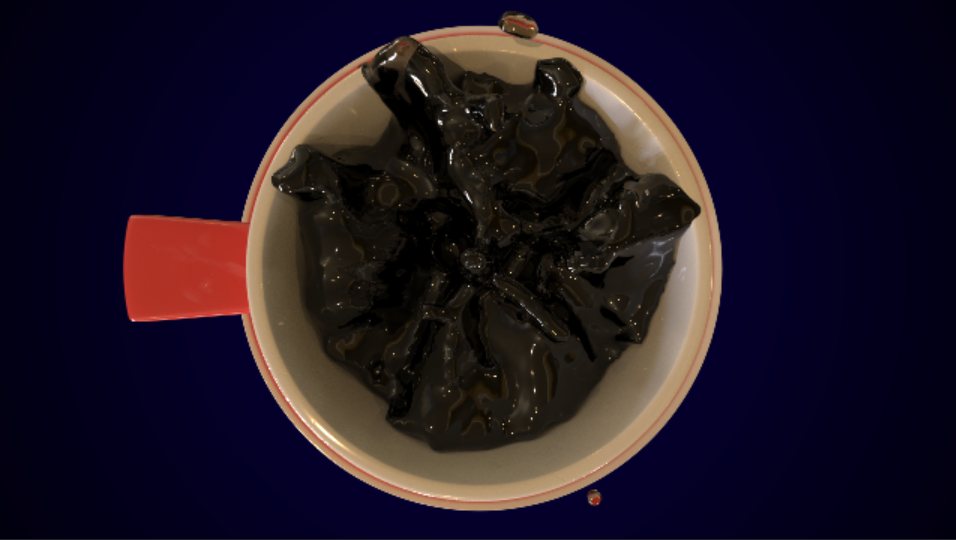Freshly Ground: a short film I produced for my thesis project.
This project was featured in George Brown College's Houdini reel: https://vimeo.com/355523699
As part of the Visual Effects postgraduate programme at George Brown College, we were required to undertake a thesis project that allowed us to look in-depth into a specific area of visual effects and "design and deliver a short video that exemplifies a professional level of skill". I am fascinated by the power and potential of proceduralism so I knew early on that I wanted to work on something in Houdini, and despite several other ideas coming to mind in the months before the project started, I kept returning to my original question: could I produce a realistic-looking simulation of a coffee grinder in action? This was inspired by a 3D model of a grinder I had worked on in Maya in advance of joining the GBC programme, which I had modelled as closely as I could to its real counterpart and which I had thought would be interesting to animate.
Rough Houdini simulation flipbooks combined to get a feel for the overall look (work in progress).
I worked through several iterations of storyboards and animatics (using mainly screenshorts and photographs) to hone the concept for the short film, eventually deciding on having beans fall into the grinder to be ground up and then for the grounds to turn into liquid coffee before splashing into a coffee cup. I then worked on previsualization in Maya and After Effects to get a clearer idea for camera moves, etc., before starting to develop simulations – something that I think saved me some headaches down the line.
In Houdini, I first developed a procedural modelling network to allow me to quickly produce randomly different coffee bean models at various levels of detail to allow for flexibility during simulations. I turned this into a Houdini Digital Asset (HDA) so that I could quickly and easily share it among different files, and then began working on the simulations. These included a rigid body (RBD) simulation of the beans falling into the funnel and settling as the handle turns, a sequential destruction simulation with several smaller levels as the pieces move down through the burrs, a particle simulation in place of RBD for the grounds falling and spinning and a FLIP sim for the final liquid splashing into the cup.
Each simulation presented new and interesting challenges to overcome, and overall I learned a lot in the course of this project. In particular, it has helped solidify and expand my understanding of various key Houdini concepts, such as DOP network functionality and wrangling attributes with VEX. The final video, presentation and report was very well-received by my teachers and classmates I am proud of the results I achieved. As with all projects, there were challenges faced and there are aspects that I might like to revisit in the future but I think overall the project was a resounding success.
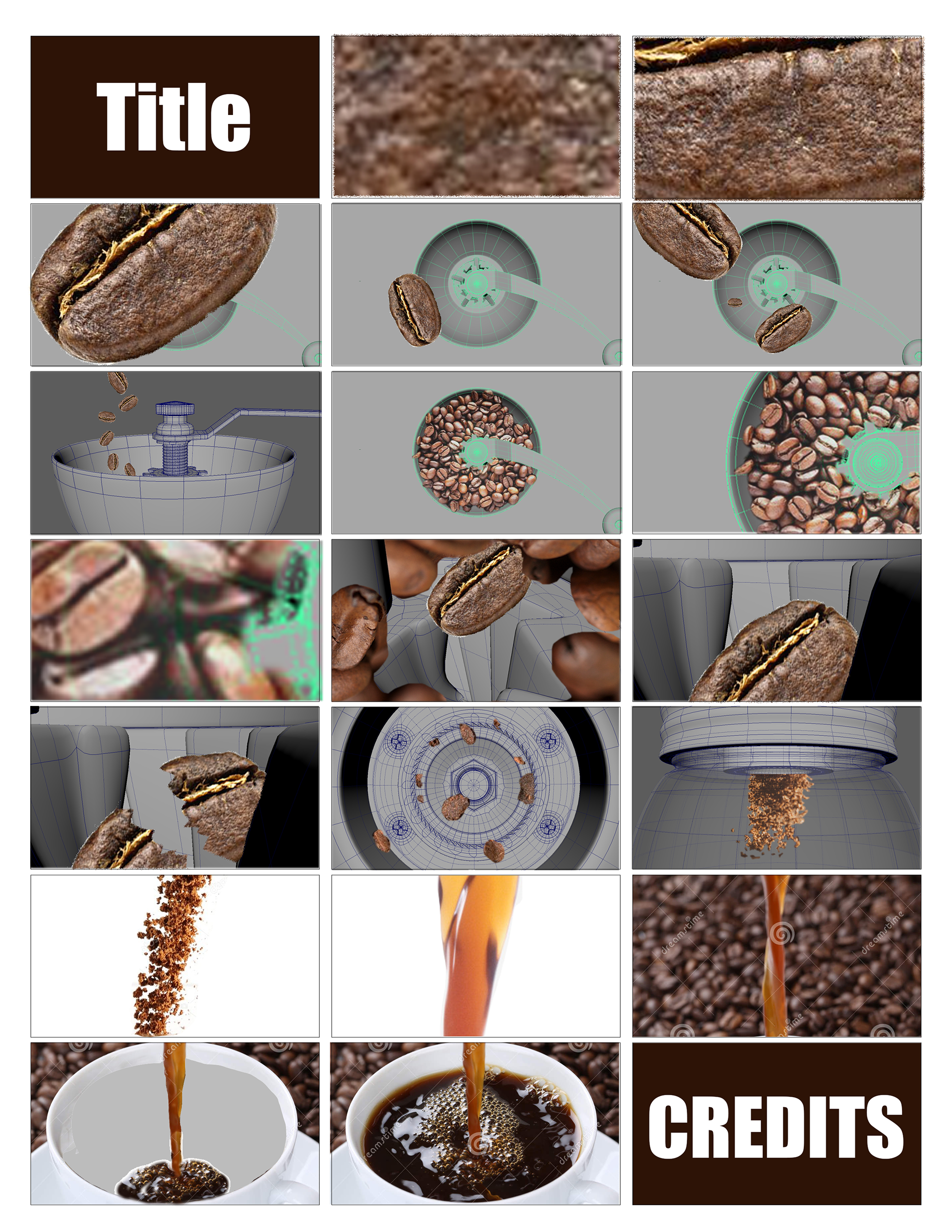
Storyboards
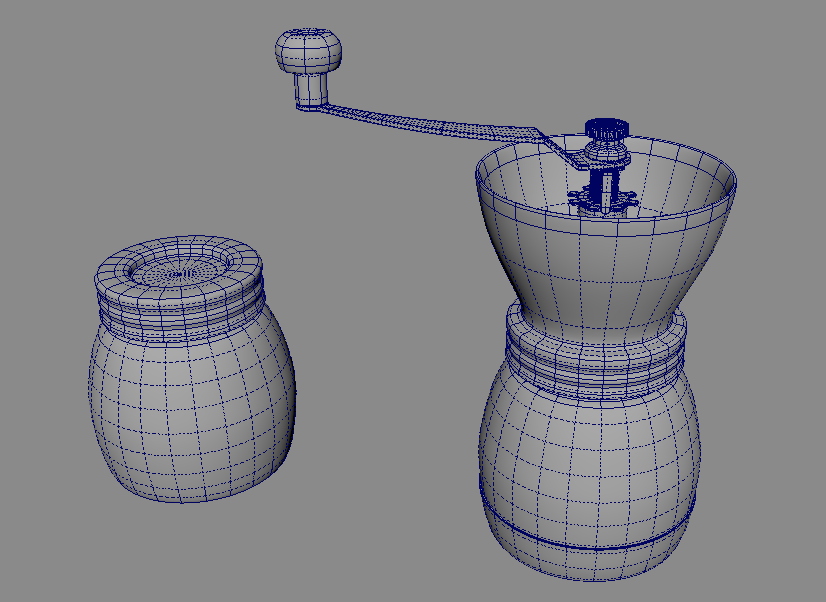
Grinder model with spare jar
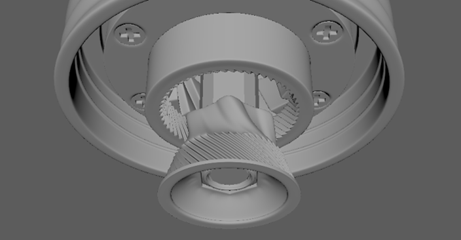
Grinder model: burrs
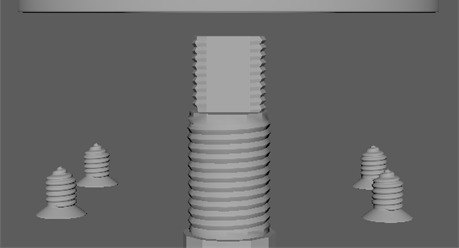
Grinder model: screws and driveshaft
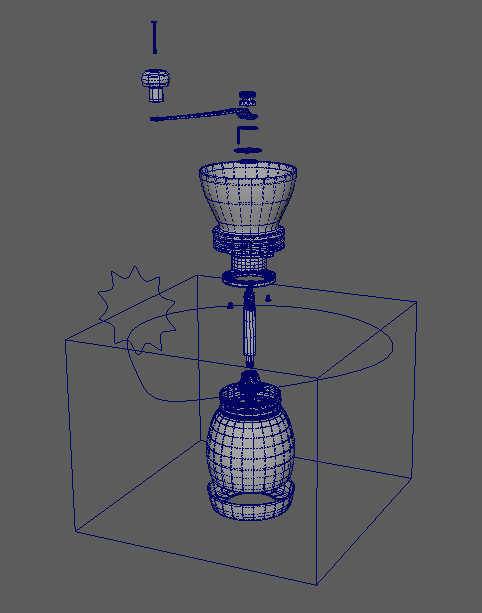
Grinder model: rough rig exploded view

Houdini Digital Asset (HDA): bean maker (WIP)
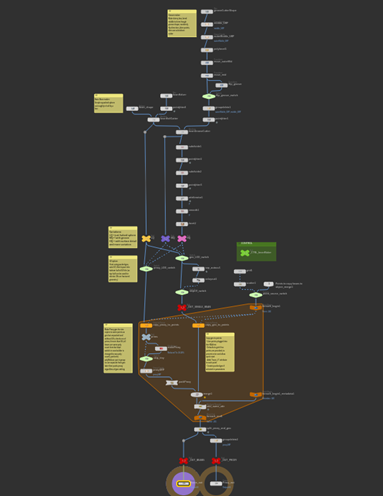
Bean maker HDA: network (WIP)
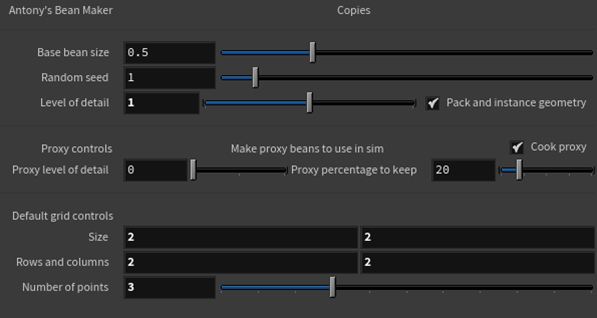
Bean maker HDA: controls (WIP)

Bean maker HDA: various levels of detail possible
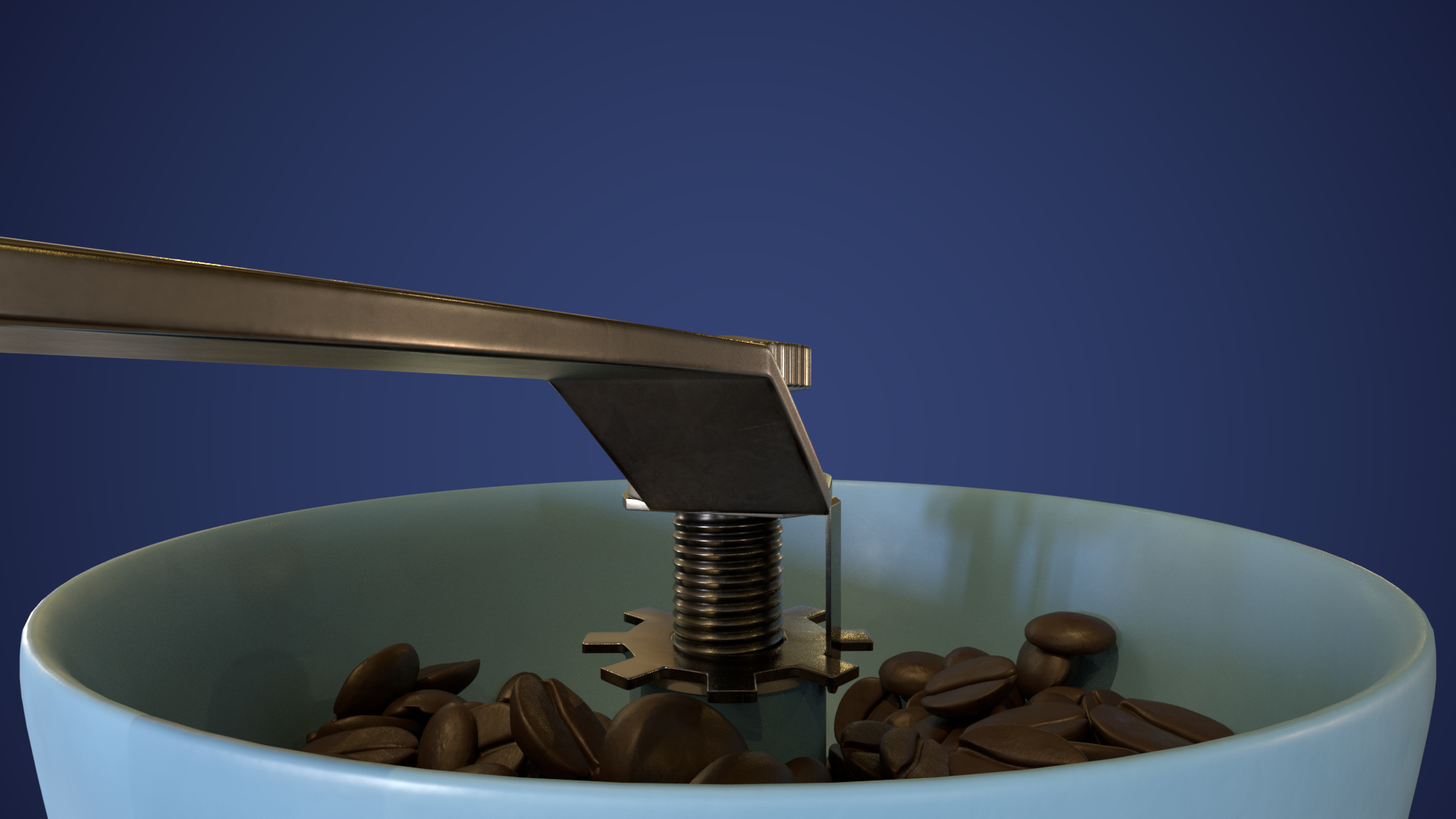
Test render - side view
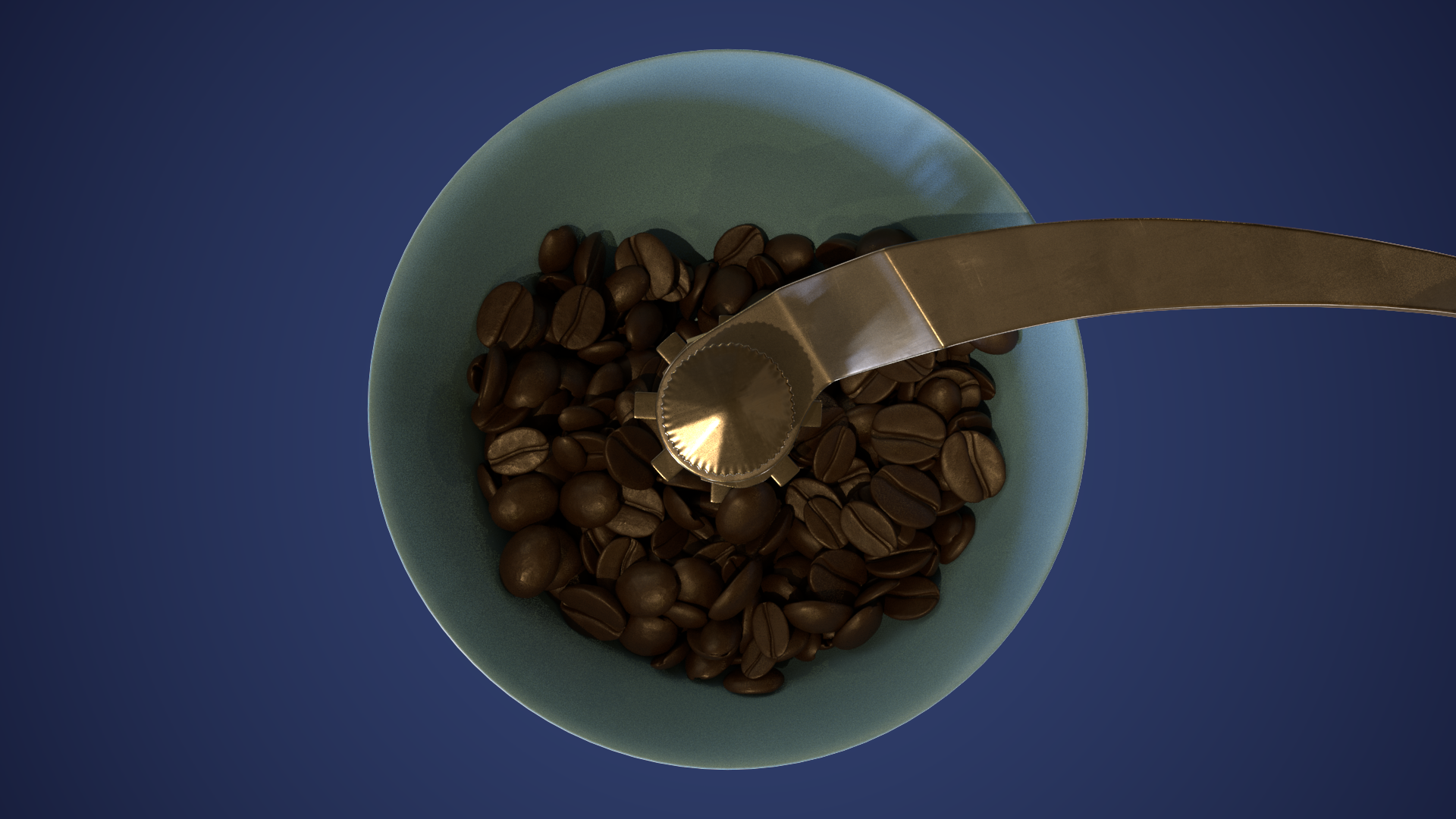
Test render - top view
Houdini FLIP sim test: filling a coffee cup (work in progress).
Houdini wetmap creation screenshot (work in progress).
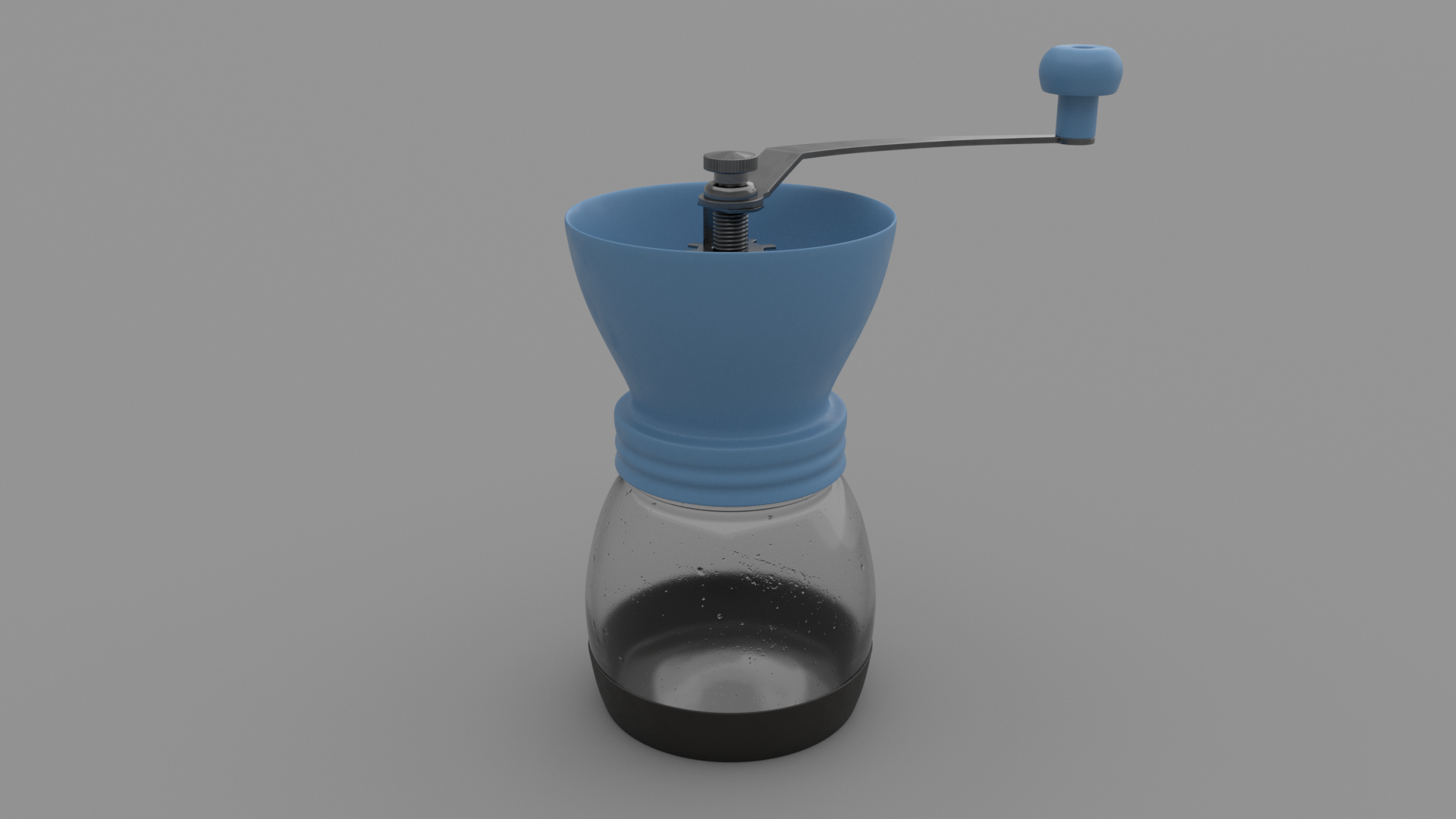
Grinder test render

Simple Houdini node setup for RBD bean falling simulation
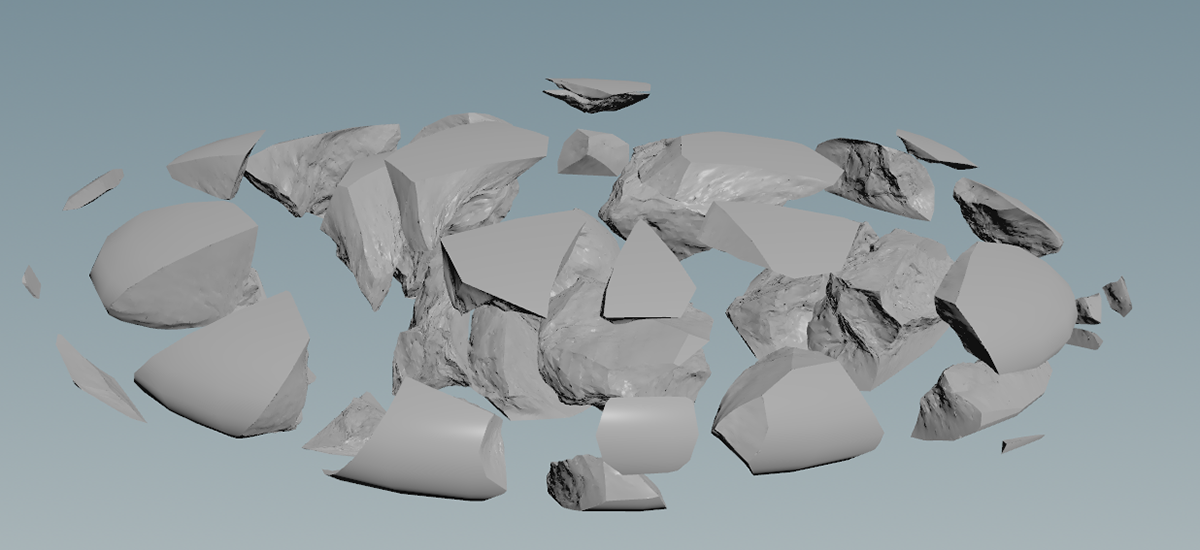
Bean fracturing test
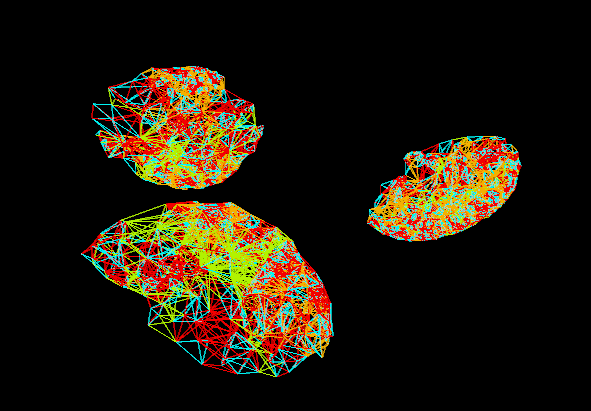
Bean constrain networks
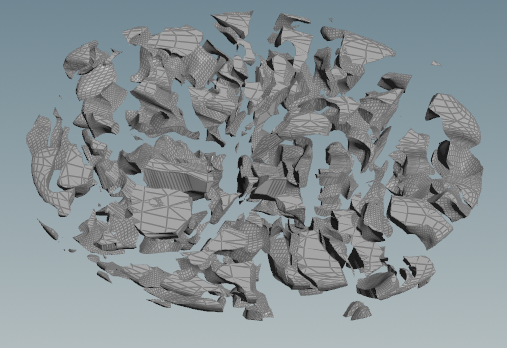
Bean fracturing detail test
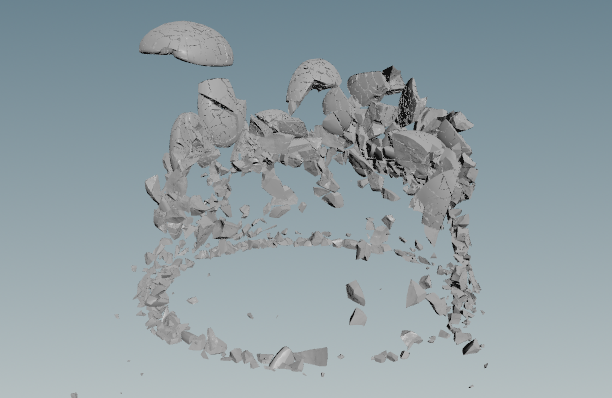
Fracturing test within the hidden grinder burrs
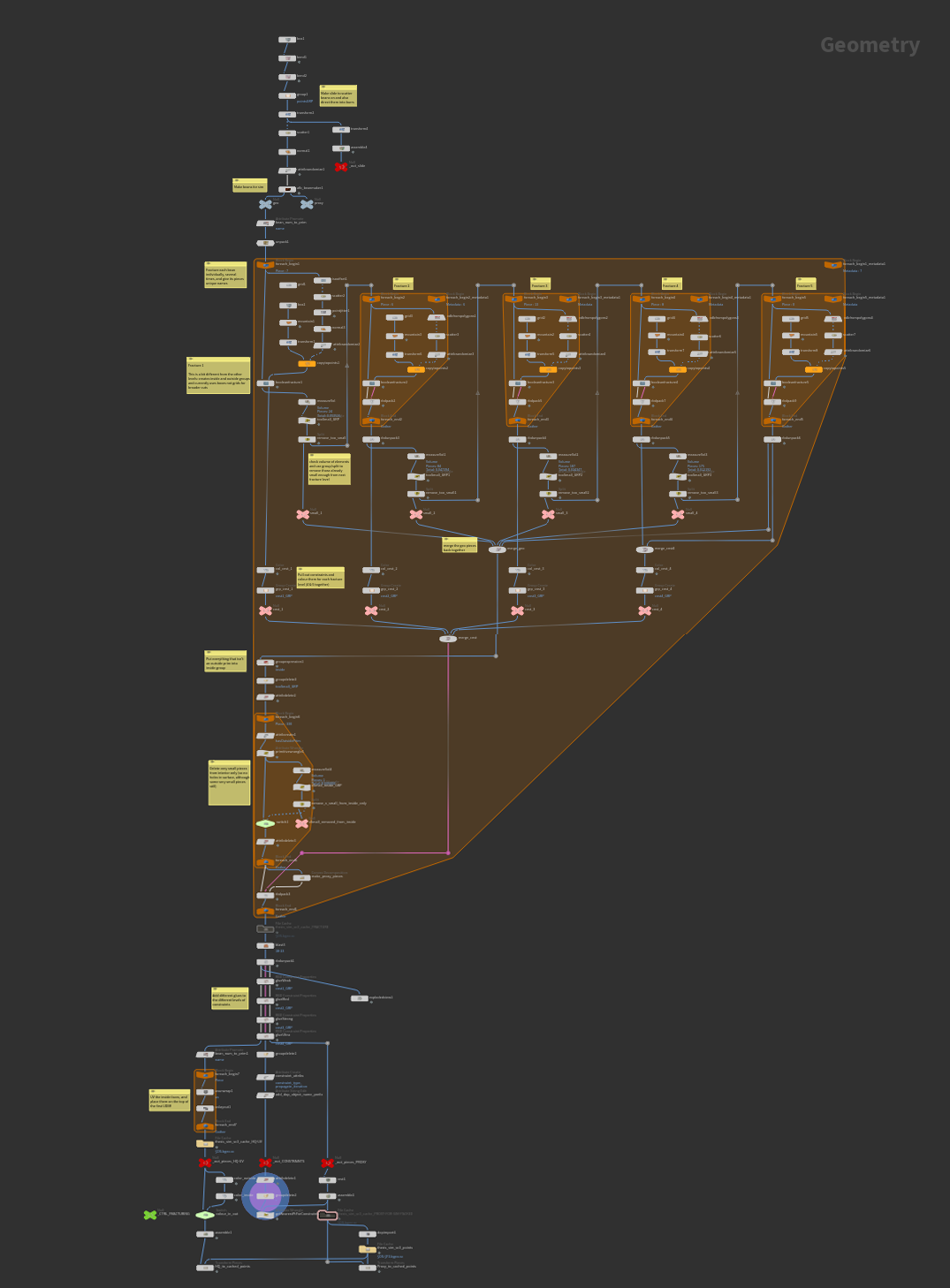
For-loop fracturing system in development
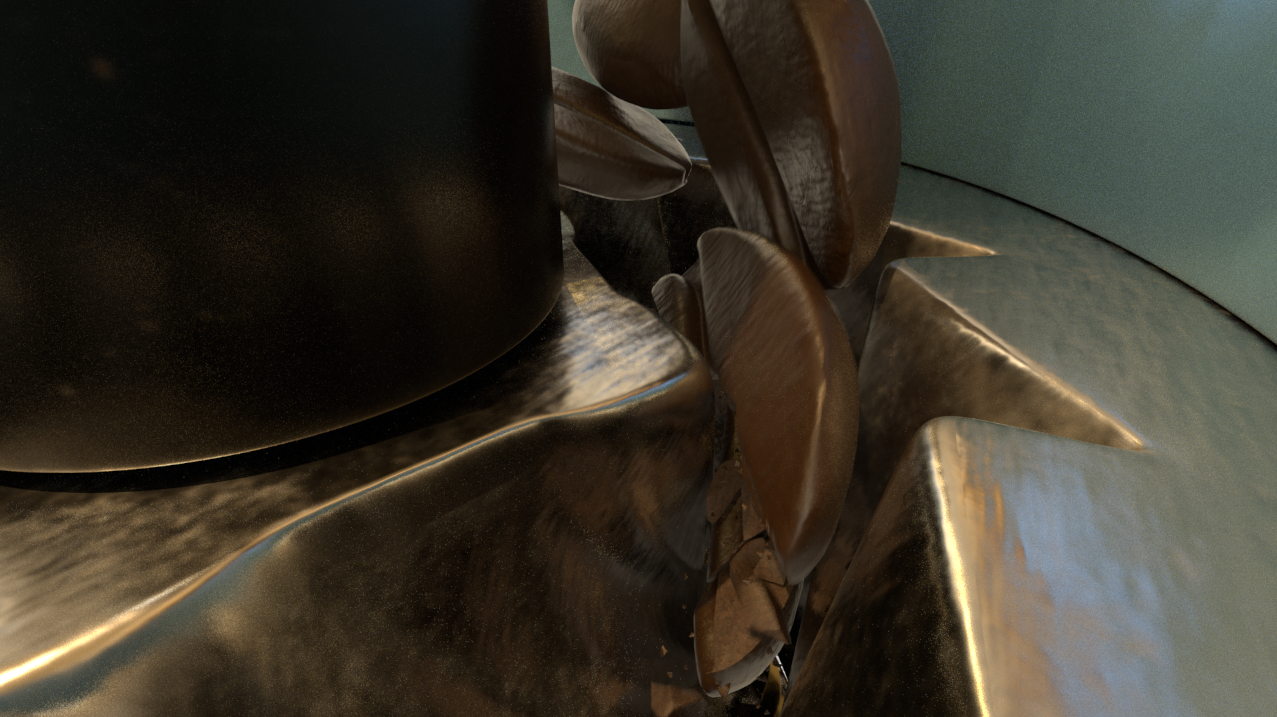
Fracturing test render

Grounds test render
